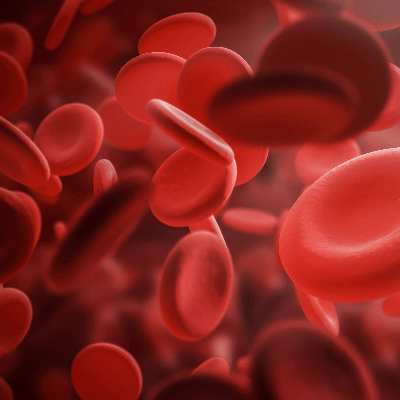
- Name: Blood (Bodily fluid)
- Location: Throughout the body
- System: Circulatory system
- Purpose: Transport nutrients, oxygen and remove waste
- Contains: Plasma, red blood cells, white blood cells and platelets
- Volume: 10 to 11 pints (average adult human)
25 Blood Facts for Kids
- Blood is a fluid that is part of the human cardiovascular system.
- Blood is transported throughout the body by the heart via blood vessels (arteries, capillaries and veins).
- Human blood is red and gets its color from the hemoglobin protein.
- The average human adult has around 10 to 11 pints of blood in their body.
- The blood volume in an average human adult will be about 7% of their body weight.
- Blood carries and delivers important substances (nutrients and oxygen) to cells and it remove wastes (metabolic waste and carbon dioxide) from those same cells.
- Human blood is made up of plasma, red blood cells, white blood cells and platelets.
- The composition of human blood is 54.3% plasma, 45% red blood cells and 0.7% white blood cells.
- Platelets react to damage to the body and form blood clots to stop bleeding.
- A blood platelet can live between 9 to 12 days in the human body.
- White blood cells protect and defend the body from foreign invaders, like viruses, bacteria and parasites.
- There are many different types of white blood cells in human blood, like basophils, eosinophils, granulocytes, lymphocytes, monocytes and neutrophils.
- Some of the white blood cells types in human blood only live for a few hours, while others can live for years.
- Red blood cells deliver oxygen to tissues throughout the body.
- An ounce of blood contains around 150 billion red blood cells.
- A human body can create about 17 million red blood cells per second.
- A red blood cell can live for up to 120 days in the human body.
- The human body creates blood cells in bone marrow.
- Humans have different blood types, like A, B, AB or O.
- Human blood types are classified using the ABO blood group system.
- The ABO blood types in humans was discovered in 1901 by Karl Landsteiner.
- The rarest blood type in the United States is AB negative (AB-), it’s estimated only 1% of the population has it.
- The most common blood type in the United States is O, it’s estimated 37% of the population has it.
- You can donate blood and blood plasma which will be used to save a life.
- Every time you donate blood you can potentially save up to three lives.
